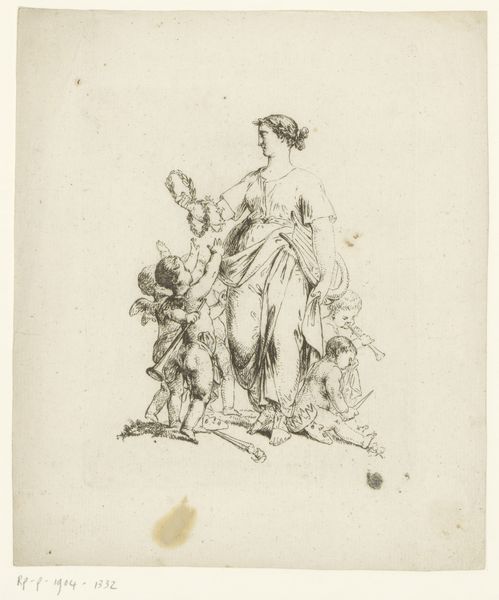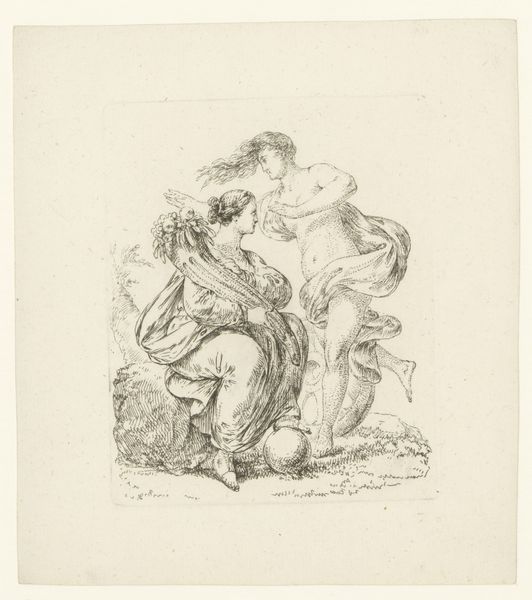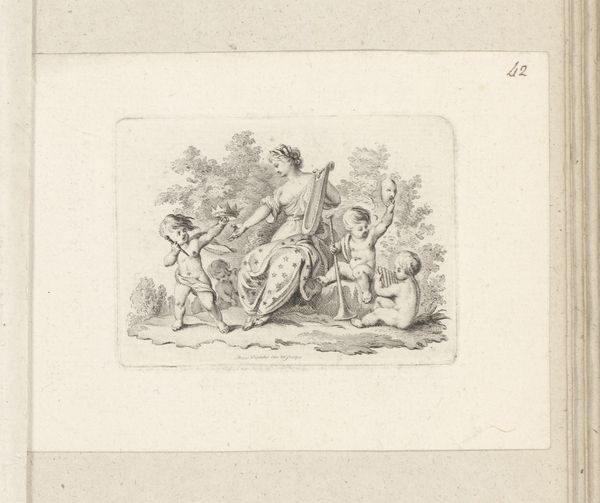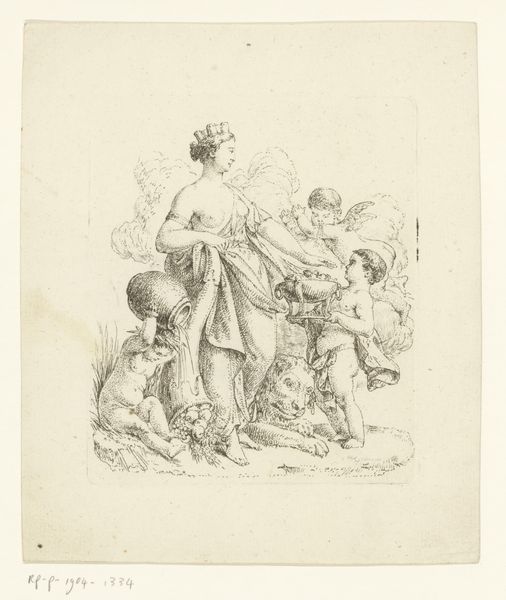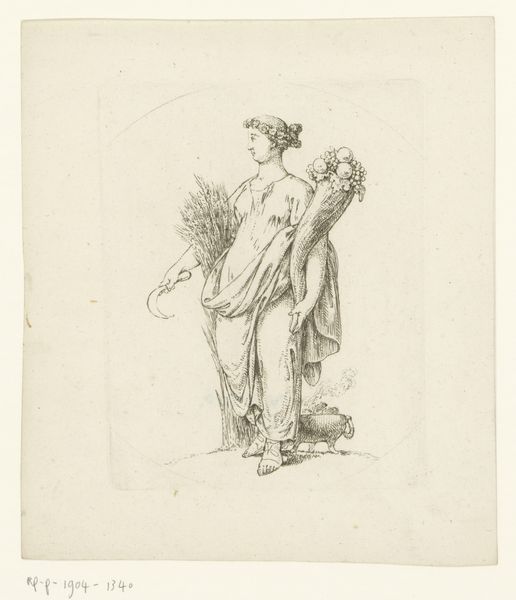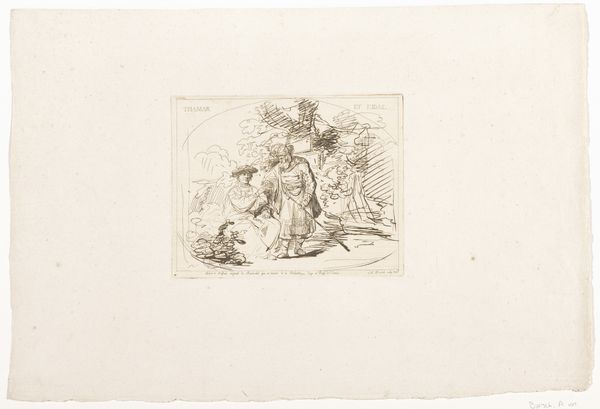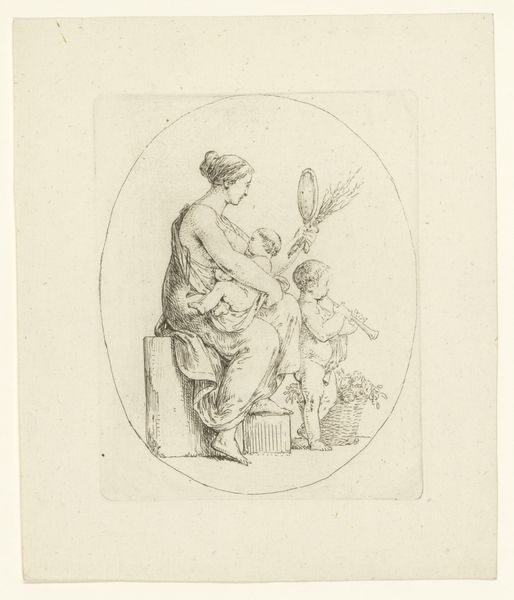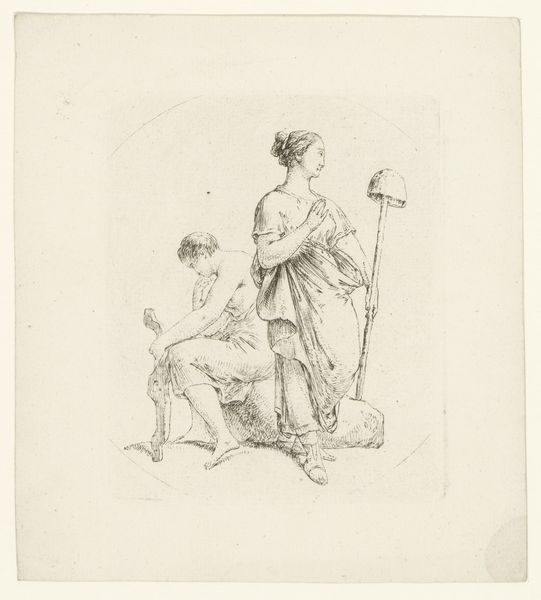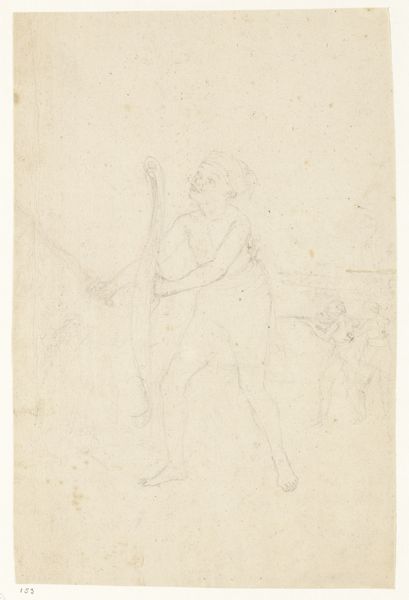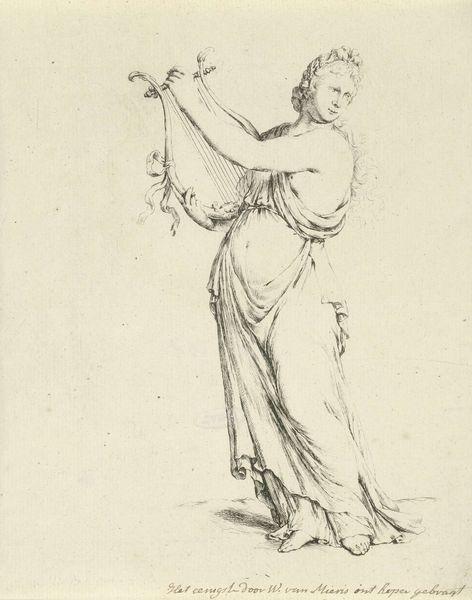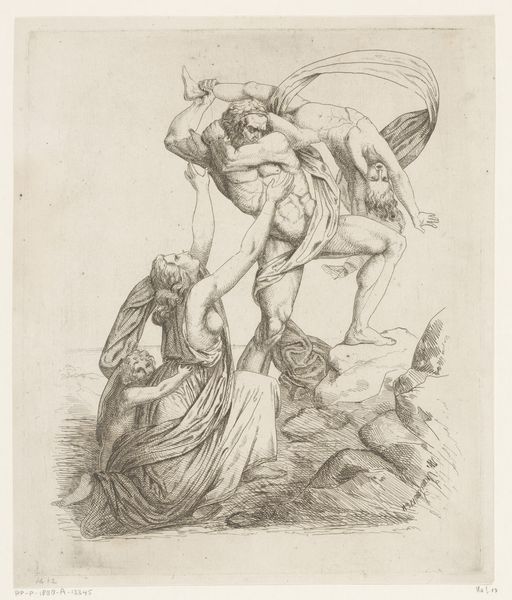
drawing, ink
#
drawing
#
neoclacissism
#
allegory
#
pen sketch
#
pencil sketch
#
figuration
#
ink
#
pen-ink sketch
#
academic-art
Dimensions: height 143 mm, width 108 mm
Copyright: Rijks Museum: Open Domain
Curator: Allegorie van de humor, or Allegory of Humor, by Christian Bernhard Rode, made in 1788. This delicate drawing now resides in the Rijksmuseum. Editor: My initial response is that this piece, done in ink and with delicate strokes, has a somewhat unfinished quality, like a thought caught mid-process. Curator: Indeed, Rode masterfully uses symbolism to explore the nature of humor. The flowing water, perhaps symbolizing wit or spontaneous creativity, is being offered by the woman to the playful cupid, embodying innocence and joy. Water, a fluid symbol throughout cultures. Editor: I am intrigued by the composition. The arrangement, how the two figures interact, their gazes implied rather than fixed. Note the drapery—it flows as freely as water, unifying the elements formally, and yet the line-work is spare, almost minimal. Curator: Consider how the allegory engages with its historical context. The work reflects the burgeoning Neoclassical fascination with antiquity and, specifically, the revival of classical ideals about human representation as symbolic in itself. Editor: You are right to note the echoes of antiquity here in the treatment of the human form, its smoothness and idealized qualities, and also, paradoxically, its sketched treatment makes it also very much a thing of the late 18th century. It lacks the finality that you expect in more resolved works of the era. Curator: Yes, perhaps Rode captures the very essence of humor, fleeting and transient. It reminds us that humor, like water, constantly adapts and renews itself. The winged cherub too recalls that even divine and innocent sources may contribute to that renewal. Editor: An astute point, to recognize that the image also evokes feelings associated with memory through line quality—a faint trace left to us that may only be re-seen in glimpses. It seems appropriate given our discussion of humor itself, in a way that it be almost "gone". Curator: Understanding this piece, as an exploration of symbolism and form, opens new avenues to understanding late 18th-century art's enduring ability to connect us across time. Editor: A testament to how the considered choices about composition and drawing, though seemingly understated, yield an intriguing commentary.
Comments
No comments
Be the first to comment and join the conversation on the ultimate creative platform.

